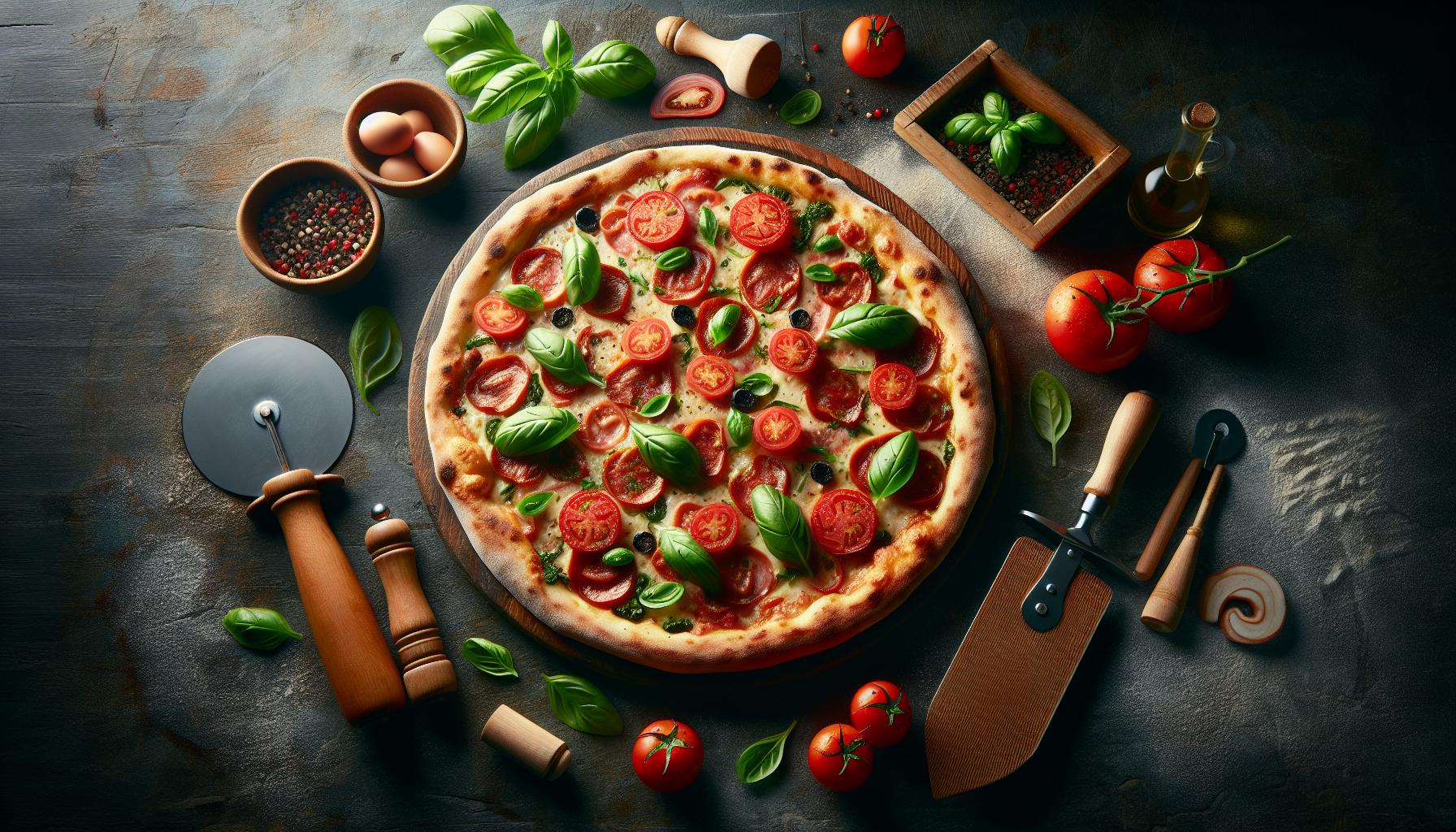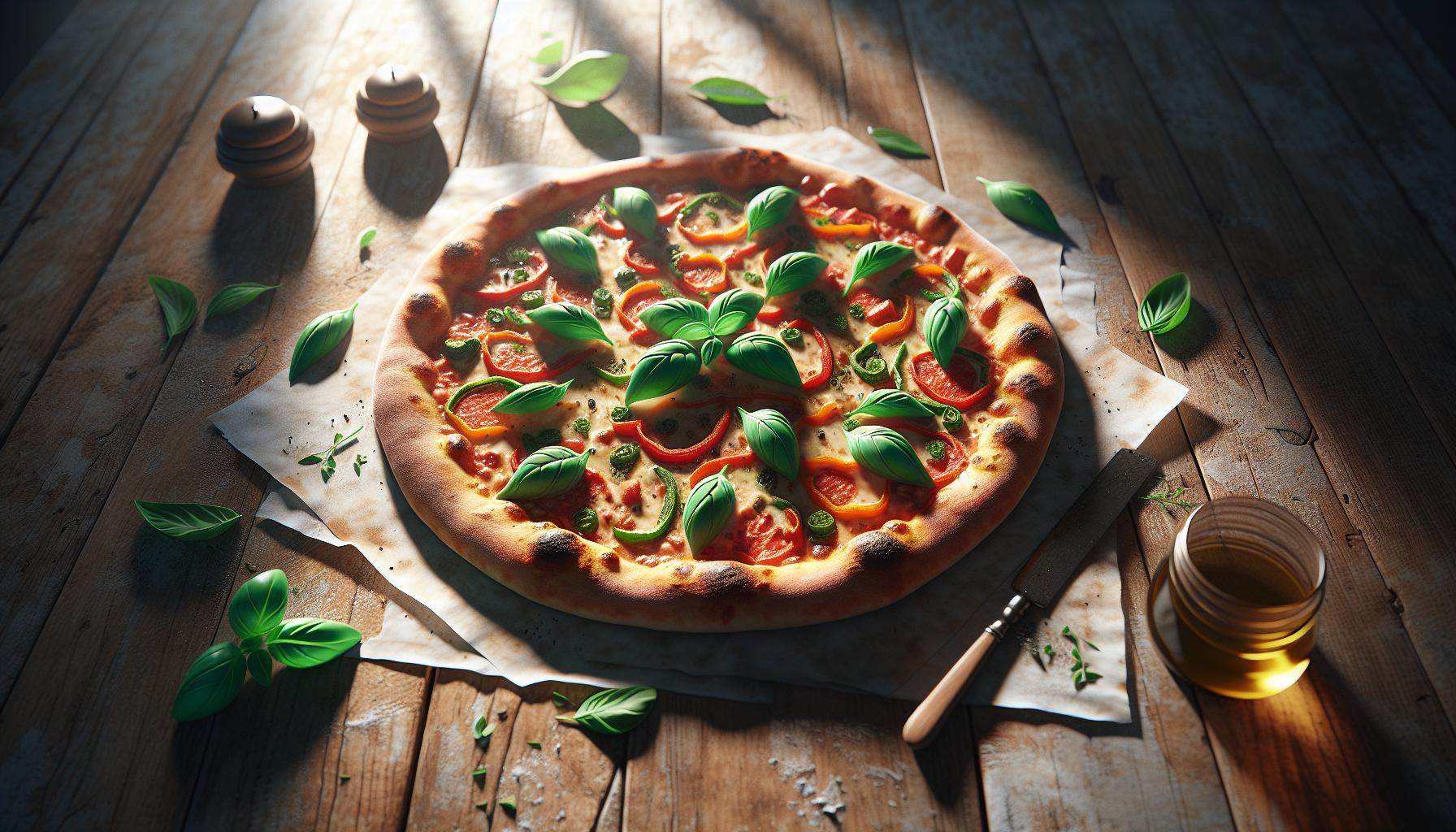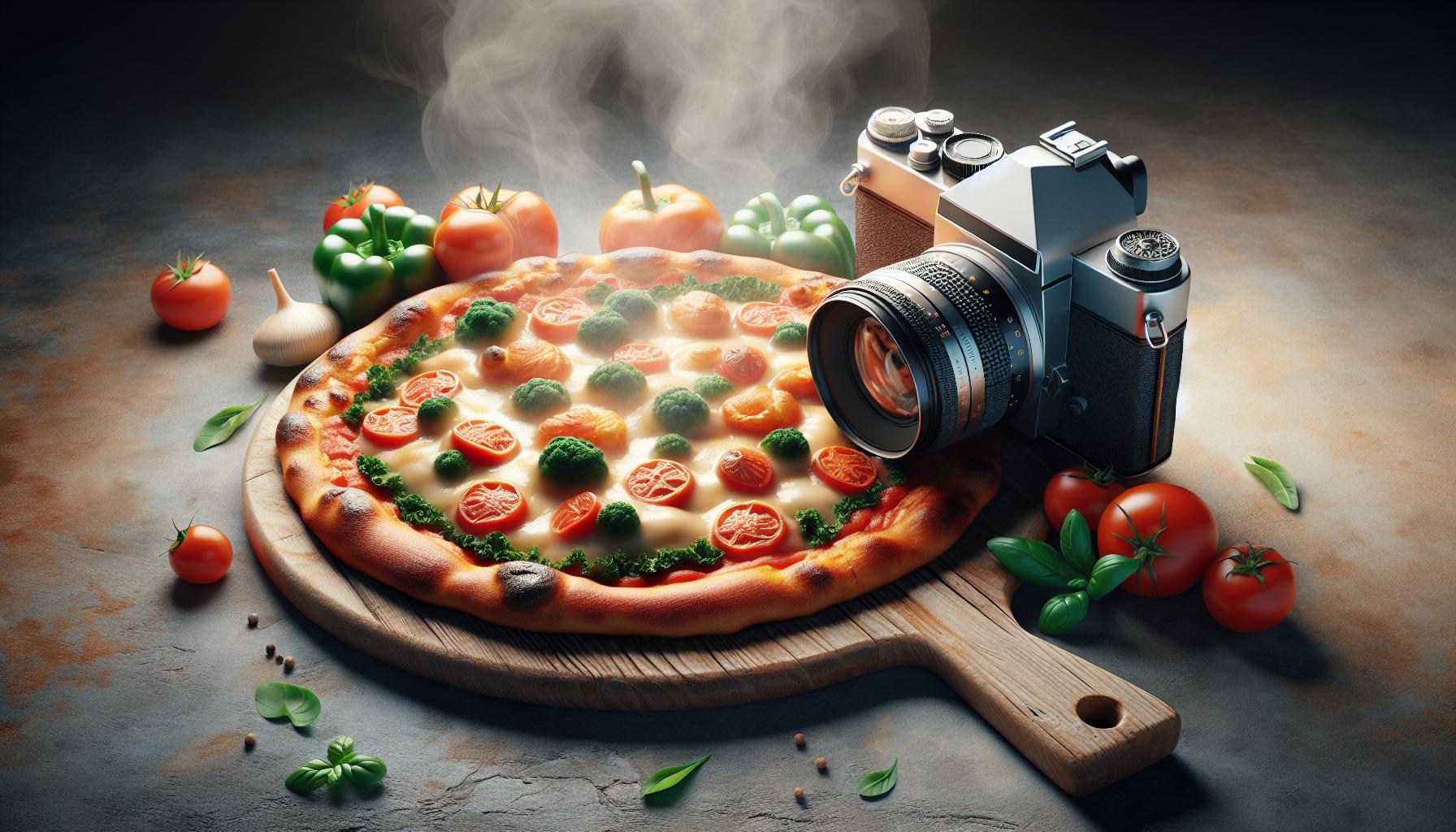Capturing the perfect pizza shot isn’t just about pointing and shooting – it’s an art form that makes viewers’ mouths water and their stomachs growl. From the stringy cheese pulls to the glistening pepperoni, food photographers know that making pizza look irresistible requires specific techniques and attention to detail.
In today’s Instagram-driven world where “we eat with our eyes first” food photography has become more crucial than ever for restaurants and food bloggers. A well-composed pizza photo can mean the difference between scrolling past and hitting that order button. Whether it’s showcasing the perfect char on a Neapolitan crust or capturing the steam rising from a fresh-out-of-the-oven pie these images tell a story that resonates with pizza lovers everywhere.
Pizza Food Photography
Professional pizza food photography requires specific tools to capture appetizing images that highlight texture, color contrast and intricate details. Here’s the essential equipment needed for stunning pizza shots.
Camera and Lens Selection
A full-frame DSLR or mirrorless camera captures high-resolution images with enhanced depth of field control. The Canon EOS R5 or Sony A7R IV deliver exceptional image quality with advanced autofocus capabilities for food photography. A 100mm macro lens enables close-up details of cheese textures, toppings and steam. The 50mm f/1.8 prime lens creates attractive background blur while maintaining sharp focus on the pizza. Additional lens options include:
- 24-70mm zoom lens for overhead composition flexibility
- 35mm prime lens for environmental pizza shots
- 90mm tilt-shift lens for creative focus control
- Extension tubes for extreme macro capability
Lighting Equipment Must-Haves
Controlled lighting transforms ordinary pizza photos into compelling commercial images. A two-light setup with diffusion provides even illumination and minimal shadows. Key equipment includes:
- LED continuous lights with color temperature control
- 24×36 inch softboxes for soft, wraparound light
- Reflectors to fill shadows and highlight textures
- Light stands with boom arms for overhead positioning
- Color-accurate LED panels (95+ CRI rating)
- Diffusion screens to soften harsh highlights
- Flag kit to control light spill and create dramatic shadows
- Emphasize pizza texture details
- Create appetizing highlights on cheese
- Control shadow depth around toppings
- Maintain consistent color temperature
Setting Up the Perfect Pizza Shot

Professional pizza food photography requires meticulous attention to composition elements that enhance the visual appeal of the final image. The setup process involves selecting appropriate backgrounds props that complement rather than compete with the pizza.
Choosing the Right Background
Dark matte surfaces create dramatic contrast for pizza food photography. Textured slate boards ceramic tiles rustic wooden tables enhance the visual narrative without overwhelming the main subject. Restaurant photographers opt for neutral-colored backgrounds in gray black or deep brown tones to make toppings pop. Surface selection depends on the pizza style with Neapolitan varieties pairing well with traditional stone textures modern artisanal pizzas matching sleek marble surfaces.
Styling Props and Accessories
Strategic prop placement creates depth dimension in pizza food photography compositions. Essential styling elements include pizza peels wooden boards fresh ingredients garnishes. A sprinkle of flour scattered ingredients or herbs adds authenticity to the scene. Traditional pizza-making tools like cutters wheels create engaging foreground elements. Pizza boxes takeout containers restaurant-branded items establish context for delivery promotional shots. The key lies in selecting props that complement the pizza’s style without cluttering the frame or drawing attention away from the hero dish.
Lighting Techniques for Pizza Photos

Effective lighting transforms an ordinary pizza photo into a captivating image that highlights texture, color contrast and appetizing details. Professional photographers implement specific lighting setups to enhance the visual appeal of pizza photographs.
Natural vs. Artificial Light
Natural light creates soft shadows and authentic color representation in pizza photography when captured near north-facing windows during mid-morning or late afternoon. Diffused sunlight through sheer curtains eliminates harsh shadows while maintaining the true colors of toppings like fresh basil or roasted peppers. Artificial lighting offers consistent results through LED panels or strobes with color temperatures matching daylight (5500K). Professional setups utilize two softboxes at 45-degree angles to replicate natural light conditions in studio environments.
| Light Source | Benefits | Best Uses |
|---|---|---|
| Natural Light | True colors, soft shadows | Restaurant settings, lifestyle shots |
| LED Panels | Consistent output, adjustable intensity | Studio work, product shots |
| Strobes | Power control, quick recycling | Commercial photography |
Creating Appetizing Shadows
Controlled shadows add depth and dimension to pizza photographs by highlighting the texture of melted cheese and raised crusts. Side lighting at a 45-degree angle creates dramatic shadows that emphasize toppings and surface details. Fill cards or reflectors positioned opposite the main light source soften harsh shadows without eliminating them completely. Strategic shadow placement draws attention to key features like bubbling cheese or crispy crust edges. Photographers adjust light intensity through diffusion materials to achieve the perfect balance between highlight and shadow areas.
| Shadow Technique | Effect | Application |
|---|---|---|
| Side Lighting | Dramatic texture emphasis | Artisanal crusts |
| Fill Reflection | Balanced contrast | Cheese details |
| Top-Down Shadows | Depth perception | Overhead shots |
Composition Tips for Pizza Photography

Effective pizza photography relies on precise composition techniques to create visually appealing images that showcase the pizza’s texture texture details. Creating eye-catching photos involves understanding key angles lighting setups.
The 45-Degree Angle Rule
The 45-degree angle creates optimal depth perception in pizza photography capturing both the surface toppings the crust thickness. This angle highlights the layers of cheese melted toppings while maintaining visibility of the pizza’s circular shape. Professional photographers position their cameras at this sweet spot to capture details like bubbling mozzarella crispy edges charred spots on the crust. A tripod mounted at this exact angle ensures consistency across multiple shots enabling photographers to make minor adjustments to props lighting without losing the optimal viewing perspective.
Capturing Steam and Melted Cheese
Hot fresh pizza produces photogenic steam trails stretches of melted cheese that create compelling visual elements. Photographers capture these fleeting moments using fast shutter speeds (1/250 sec or faster) proper timing. Strategic backlighting makes steam visible while side lighting emphasizes the glossy texture of melted cheese. Here’s how to capture these elements:
| Element | Technique | Camera Settings |
|---|---|---|
| Steam | Backlight setup | f/5.6, 1/250 sec |
| Cheese pulls | Side lighting | f/4, 1/200 sec |
| Surface glisten | Top diffused light | f/8, 1/160 sec |
The key lies in timing the shot when the pizza reaches 165°F ensuring optimal cheese elasticity steam visibility.
Post-Processing Pizza Photos
Professional post-processing transforms raw pizza photos into stunning marketing assets. The editing process emphasizes the appetizing qualities of pizza while maintaining authenticity.
Color Correction and White Balance
Color correction starts with establishing accurate white balance using the pizza plate or neutral elements in the frame as reference points. Adobe Lightroom’s temperature slider adjusts warm tones to highlight golden crusts at 5500-6500K while the tint control removes unwanted color casts. The HSL panel enables selective color adjustments – increasing red saturation enhances pepperoni (+15) while reducing orange tones prevents cheese from appearing artificially yellow (-10). Proper exposure compensation lifts shadows (+0.5) without losing highlight details in the melted cheese.
Enhancing Texture and Details
Texture enhancement brings out the pizza’s appetizing surface qualities through targeted adjustments. Clarity settings between +15 to +25 accentuate the contrast in mid-tones revealing cheese texture patterns. The dehaze tool at +10 adds definition to steam rising from hot pizzas. Selective sharpening with a radius of 1.0 pixel enhances crust details like char spots bubbles. Strategic use of the texture slider (+20) emphasizes toppings while maintaining natural-looking cheese melt patterns. Local adjustment brushes target specific areas like herbs garnishes for added pop without affecting the overall image balance.
Essential Marketing Tool
Food photography has evolved into an essential marketing tool and pizza photography stands at the forefront of this visual revolution. With the right equipment technical expertise and creative vision photographers can transform an ordinary pizza into a compelling visual story that drives engagement and sales.
Success in pizza photography isn’t just about having the latest gear – it’s about understanding how to capture the essence of what makes pizza irresistible. From the perfect cheese pull to the steam rising from a fresh-baked pie every detail matters in creating images that make viewers reach for their phones to place an order.
The combination of proper lighting techniques careful composition and skillful post-processing creates photos that don’t just showcase pizza – they celebrate it. In today’s digital marketplace these images serve as powerful tools that connect pizzerias with hungry customers and help build lasting brand relationships.

